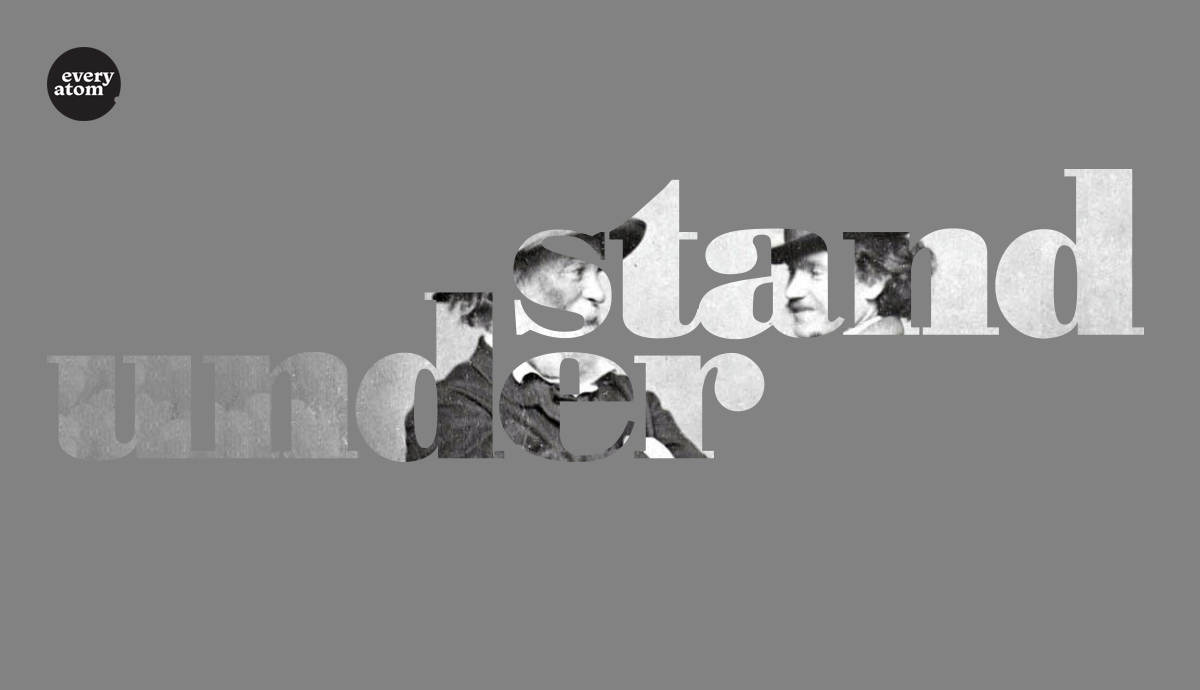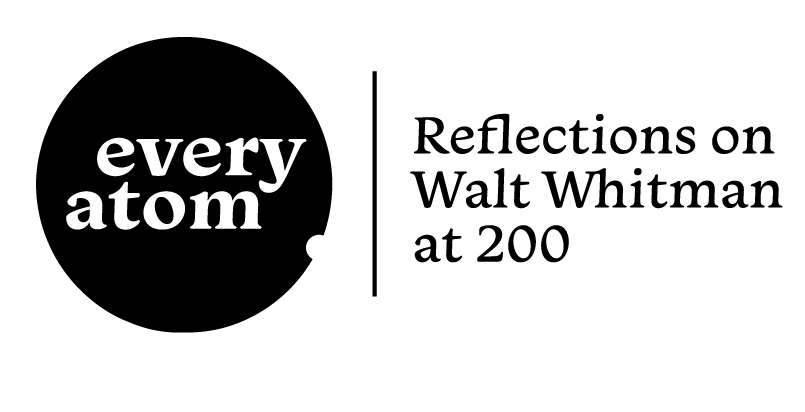Every Atom | No. 34
Introduction to Every Atom by project curator Brian Clements
Whitman loved that word, understood, it seems—this is just the first of eight times he will use understood or understand in the 1855 edition of this poem alone. To really grasp Whitman’s intended connotations, we might want to look to the roots of the word. Understand in the Whitmanian sense is not just to know or be known or even to be familiar with. Whitman’s understand resurrects the Old English understandan, which means “to stand in the midst of,” for the poet is always among and in the midst of things, objects, handkerchiefs, youngsters, grass, God—in these early lists. We can also look to the Greek epistamai’s literal meaning of “I stand upon,” but also “to put one’s attention on” or “to place thoughts on a thing.” In Whitman, thoughts are things and things thoughts; Whitman knows what it means to be truly understood but does not care if he is not understood.
Decades later, a woman broke into the poet’s house at 328 Mickle Street. According to Horace Traubel, the woman “gave hell from A to Z” over Whitman’s intent to “ruin boys, girls, people by [his] flagrant philosophy.” Whitman didn’t say a word throughout the rant, which left her puzzled. “Haven’t you a single thing to say in your defense?” the woman asked. “Madam, I need no defense,” said Whitman, who had remained in his downstairs chair the whole time. “I only need to be understood.”
Recommended
Nor’easter
Post-Op Appointment With My Father
Cedar Valley Youth Poet Laureate | Fall 2024 Workshop







